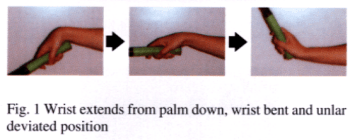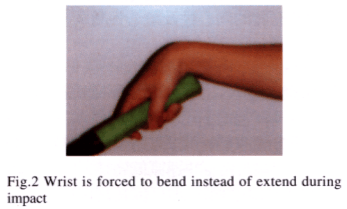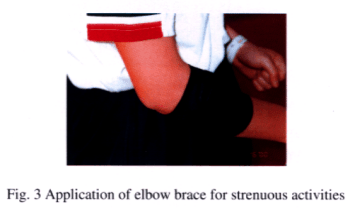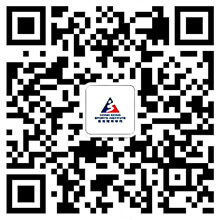Sports Medicine Education No. VIII - Tennis Elbow
Introduction
Lateral epicondylitis (Tennis Elbow) is a painful inflammation of the tendon on the outer side of the elbow, caused by repetitive use of the muscles that lift the wrist and fingers dorsal side up. Sufferers feel pain at the lateral aspect of the elbow and this increases with powerful grip or lifting actions.
It is called Tennis Elbow because the backhand swing in tennis is a common activity that can cause the problem. However, this condition is not exclusive to tennis players.
Etiology
Tennis elbow is a typical example of an overuse syndrome. Studies show that the wrist extensors, particularly the extensor carpi radialis brevis, are under great tension when the wrist is lifted up from a palm down, wrist bent and ulnar deviated position (Fig.1 ).

With repetitive stress or overstress, such as during the back hand stroke in racquet sports; attack in fencing; or other prolonged griping activities as in hammering or gymnastic, few fibers of the tendon or muscle-tendon-bone junction are stretched beyond their limits and result in microscopic tears.
The majority of this kind of tear will heal eventually. However due to many possible causes, e.g. repetitive stress before healing is complete, the poorly healed fibres break down with the next significant stress. The cycle repeats and eventually results in degeneration of the tendon that further weakens the muscle and exacerbates the degeneration process.
The athletes will experience chronic pain at the site of inflammation. Owing to the degenerative nature, some people prefer to use the term "tendinosis" and not "tendinitis" to describe this condition.
Predisposing Factors
Insufficient upper arm strength
In strenuous upper limb sporting activities, e.g. tennis, insufficient strength of the wrist extensors will affect the stability of the wrist particular during the ball impact. The wrist is forced to bend instead of extend and causes a considerable load to the tendon (Fig. 2). Such stress will be further increased in those with poor flexibility of the wrist extensors.

Activities with repeated wrist movement or activities with consistent power griping also have heavy demand on the musculotendinous unit. Insufficient strength will increase the wear and tear of the tendon.
Improper technique
This happens commonly during backhand stroke in tennis. Inability to assume a satisfactory position for the return stroke forces the player to use extra forearm strength instead of body kinetics and weight transfer. Improperly trained players consistently miss the 'sweet spot' i.e. centre of the racquet, this will also induce excessive stress on the tendon.
Improper equipment
Inappropriate grip (too large or too small), size, excessive weight or tension of the racquet/equipment, heavy duty rubber-centered ball or balls soaked in mud or water will also increase the stress during impact.
Training error and inadequate warm-up
A good training programme should be balanced and tailor-made according to one's ability and age. Over-emphasis on field practice without physical conditioning; over-emphasis on strength but no flexibility; excessive practice of a particular stroke; sudden increases in training intensity; too hard or pre-mature training after injury, all do more harm than good.
Insufficient warm-up lowers the ability of a tendon to withstand the stress created by both contraction and elongation.
Management and Treatment
Rest and activity modification
Appropriate rest is important particularly during the acute phase (severe redness, swelling, and pain). However, modification of activity is also essential in managing tennis elbow. Identifying the inducing mechanism and making modification helps to lessen the stress on the tendon. Studies on tennis players with tennis elbow showed that most of the players found a 90% reduction in symptoms simply by decreasing intensity, and by taking lessons to improve their technique. Lighter racquets with reduced string tension can also help to decrease energy transfer to the arm.
Physiotherapy
Application of the R.I.C.E. principle (rest, ice, compression, elevation) and other electrical modalities helps to control the inflammation process and optimise the healing of the tendon. Local massage and stretching reduces the adhesion and improves the flexibility of the tendon. A progressive strengthening programme conditions athletes to endure both concentric and eccentric load on the tendon.
Medication
Anti-inflammatory medications prescribed by the doctor are useful in decreasing the inflammation and pain.
Corticosteroid injection is sometimes used locally by some athletes/players who are looking for quick relief. However, this is not recommended because of its negative effects on the tissues.
Surgery
If conservative treatment is ineffective over a period of 6 months to 1 year and the symptoms are disabling, surgical intervention might be considered. The most popular procedure today is a release of the extensor muscle origin and excision of diseased tissue (Homans procedure). This can be performed as an outpatient procedure under local anaesthetic and leaves a scar of around 3 cm.
Prevention
Prevention is better than cure. The best preventive measure is to condition oneself to play with good biomechanics. Good flexibility and adequate concentric and eccentric strength and endurance are always important. The use of elbow brace (Fig. 3) helps to reduce muscle contractile tension and distribute muscular forces to the surrounding tissues and the brace itself.

For more information, please contact:
Sports Medicine Department
Telephone: (852) 2681 6134
All information in this pamphlet is for reference only
 ID: hksportsinstitute
ID: hksportsinstitute

